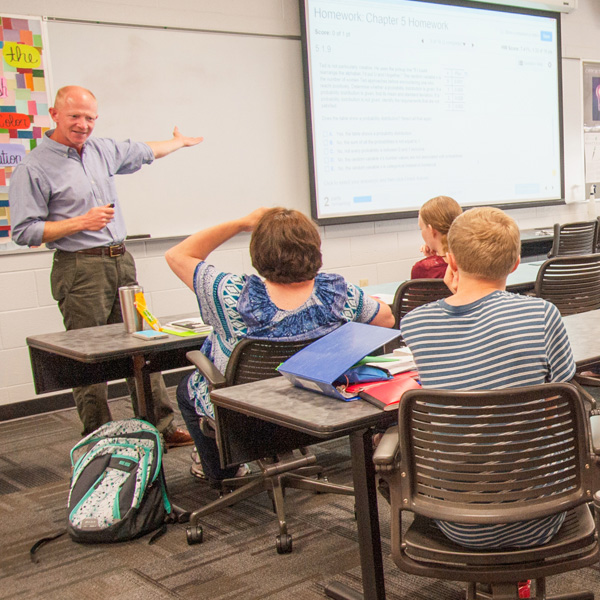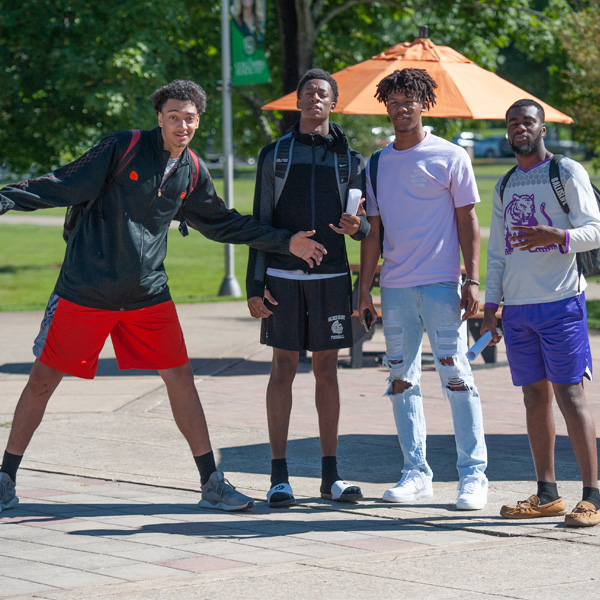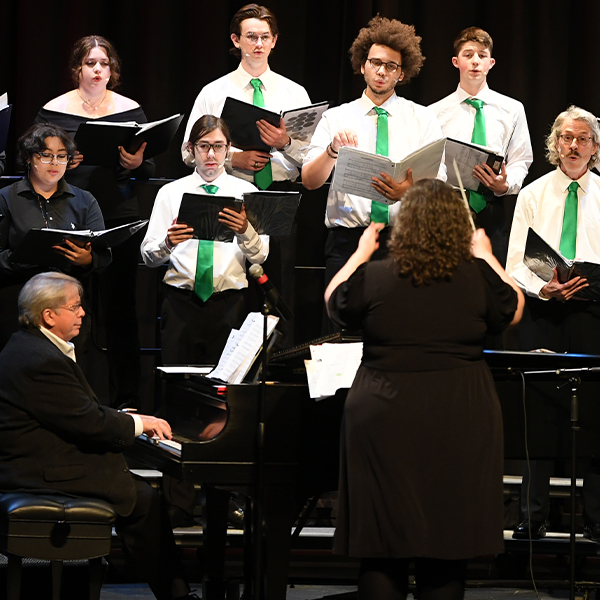50th Anniversary Celebration
Opening Doors to Opportunities
Efforts began in the spring of 1966 to create Columbia State as prototype for the other Tennessee community colleges that were to follow. In a brief span of 18 months, the college was conceptualized, personnel were hired, temporary quarters were secured, classes were scheduled, and three full quarters of instruction were provided while a new campus with six buildings was completed and readied for occupancy by the fall of 1967.
When planning for Tennessee's first community colleges, the state board of education's Junior College Committee visited Maury County to view prospective sites. A committee of 600 Maury County citizens made a presentation to the Junior College Committee which finally recommended the first community college be built in Columbia. Two other locations were chosen as well for future colleges thus providing a community college in each of Tennessee's three divisions.
On June 30, 1965, Commissioner Warf toured sites in Maury County and selected the 204-acre Hickman farm, located four miles west of downtown Columbia, as the location for Columbia State. Warf and Governor Clement turned the first spades of dirt at the groundbreaking ceremony on October 20, 1965.
In the fall of 1966, Columbia State opened its "doors" despite the construction not being complete on the new campus. Facilities for the college were used all over town, including First Baptist Church, Columbia Military Academy, and the Memorial Building. The first student body started with 363 students but quickly grew to 538 by the winter quarter.
Perhaps the most exciting day for Columbia State was March 15, 1967 when the First Lady, Lady Bird Johnson, came to dedicate the new campus. She declared that Columbia State represented the "new beat and rhythm of our land... when a Columbia Community College rises from a once empty field, the country expands not outward, but upward."
Today, Columbia State has grown to five campuses serving nine counties in southern Middle Tennessee. We remain committed to student success and opening doors to opportunities.
Through the Decades
- 1957 – The Public Higher Education in Tennessee study, commonly referred to as the Pierce-Albright Report, was completed. The report identified a significant need to expand higher education in Tennessee. The report identified three areas that were considered underserved by higher education, including the south central Middle Tennessee region. (The other two areas were the Chattanooga and Jackson areas.) This report would later serve as a cornerstone in the history of Tennessee’s community colleges.
- Late 50s/Early 60s – The report generated great interest and led to the development of a Maury County committee that sought to have a college established in Columbia. The committee was comprised of some 600 people and was led by John W. Finney, editor of the Columbia Daily Herald, and Hardin Hill, a local engineer and civic leader. In addition, the Maury County Quarterly Court pledged one million dollars toward development costs if the new college was located within 12 miles of the courthouse.
- Early 1963 – Gov. Frank G. Clement and state of Tennessee Education Commissioner, J. Howard Warf, met with leaders of the Tennessee General Assembly to reach an agreement to proceed with the development of new higher education institutions. The legislation (Chapter 379 of the 1963 Public Acts, Section four, Item 43) appropriated $100,000 to the State Board of Education for the preliminary planning and establishment of “additional, regional-type institutions of higher learning” as recommended in the 1957 report.
- Aug. 9, 1963 – The State Board of Education adopted a resolution for the chairman, Commissioner Warf, to appoint five board members to make preliminary plans for a state college that would be located in the south central area of Tennessee. Although there was significant need in the other two areas of the state, the south central area had a long-standing desire and support to obtain a college dating back to the early 1900s. This college would serve as the prototype for those that followed.
- Dec. 12, 1963 – The state’s junior college committee visited Maury County to view prospective sites.
- Dec. 16, 1963 – The 1963 Higher Education Facilities Act was approved. This federal legislation authorized a grant program to assist with financing construction of two-year colleges.
- Feb. 7, 1964 – The state’s committee, now known as the Committee for a Junior College in South-Central Tennessee, adopted a progress report that noted after careful consideration, they had come to the conclusion that a “multi-purpose college” was needed in the area.
- Dec. 17, 1964 – After much discussion and research, the junior college committee adopted a landmark resolution for the establishment of three community-junior colleges, one in each of the state’s grand divisions.








